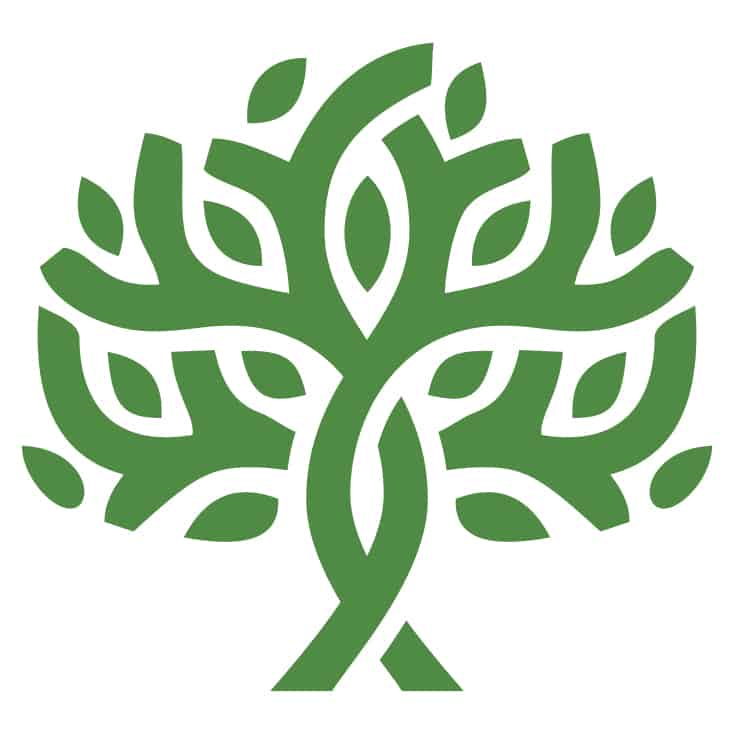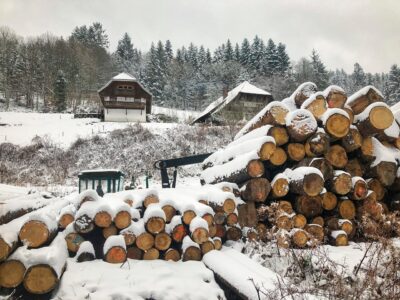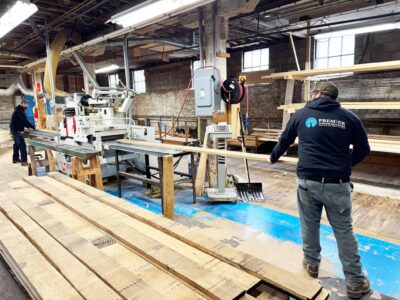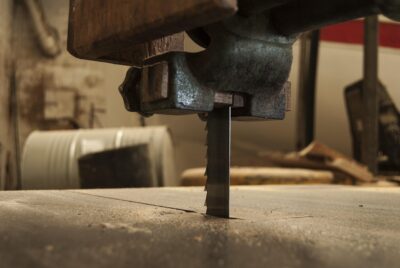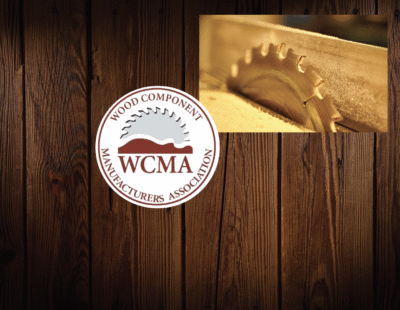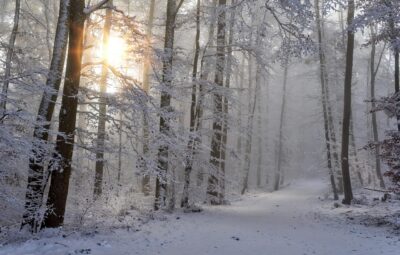VERT, An AHEC Project In Red Oak Glulam And Climbing Plants, Installed In Germany This Summer
For the 2024 London Design Festival, AHEC collaborated with Stefan Diez’s industrial design studio Diez Office and urban greening specialists OMCºC to create Vert, a first of its kind structure to address temperature and biodiversity in cities. Massive spans of Red Oak glulam beams establish the frame of Vert, and native climbing plants lace their way through netting stretched over the A-frame peaks. As the plants grow, the tall “sails” of Vert will be covered in foliage that works to remove carbon dioxide from the air, support local pollination, and create areas of cooling shade for people to enjoy.
Vert was a massive hit at London Design Festival last fall, and now has a new home for summer 2025! Vert will be showcased at the National Art Museum of Germany, the Bundeskunsthalle in Bonn, from May to October 2025. Installed on the museum’s plaza, Vert will be part of the WEtransFORM exhibition and will have an entire summer to fully grow the canopy of climbing plants. Throughout the exhibition, materials on-site will explain the sustainability of the American Red Oak used in the project.
Built from sustainable materials, Vert combines aesthetic appeal with tangible environmental benefits and represents a transformative approach to urban development. The installation is projected to cool the surrounding airspace by as much as 14ºF, cast four times more shade than a 20-year-old tree, and produce as much biomass as an 80-year-old lime tree – all through the use of climbing plants grown over the course of a single summer.
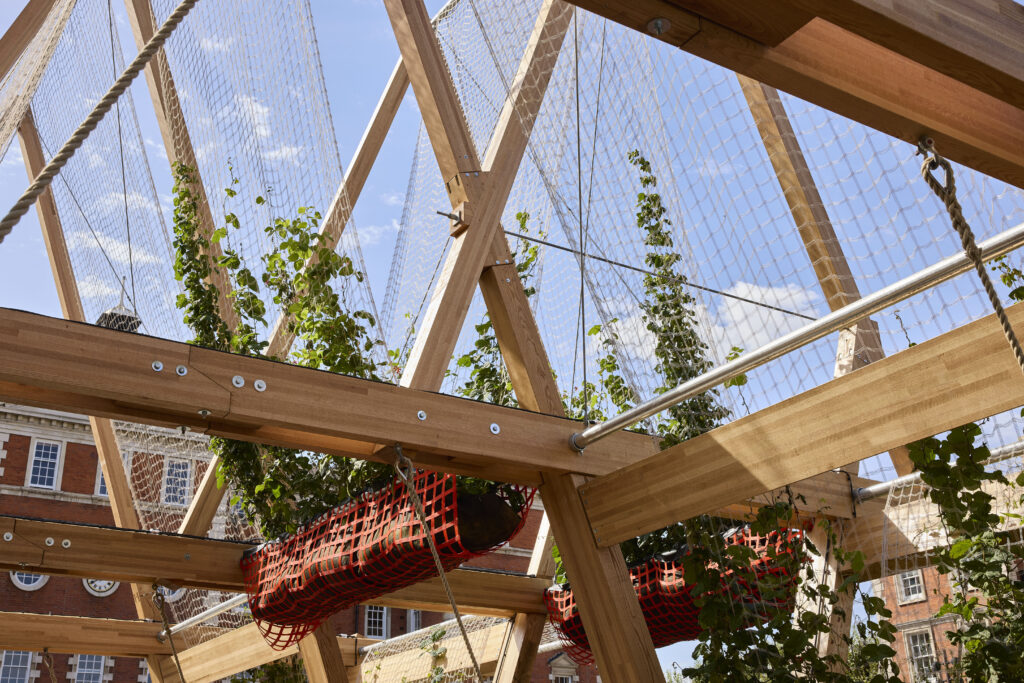
Over the last decade and a half, AHEC has presented a host of experimental structural projects that showcase innovations in hardwood, such as hardwood Cross-Laminated Timber (CLT) and Thermally Modified Timber (TMT). Vert continues this important work, this time focusing on highlighting the potential of Red Oak glue-laminated timber (glulam), an engineered material created by finger jointing and laminating multiple grain-aligned layers of timber to enhance strength and stability. This enables the creation of large, structurally robust components suitable for modern construction.
Constructed from Red Oak glulam, Vert project consists of a series of timber triangles holding suspended biodegradable nets. These provide a framework for climbing plants, rooted in textile planters at the base of each net. The sails create a canopy of around 20 different native plant species, creating a living ecosystem that enriches local biodiversity, serves as a habitat for essential insect populations, aesthetically enriches the urban landscape, and provides a sheltered space where visitors can gather and relax.
“The structure performs as a ‘Greening Machine’, while also making urban spaces more harmonious and pleasant to live in from an aesthetic point of view,” explains Stefan Diez, the Director & Founder of Diez Office. “We wanted Vert to break the monotony of our urban environment.” Vert also features a decked floor beneath the sails made from thermally modified Red Oak. This chemical-free heat treatment alters the wood’s cellular structure, enhancing its durability and stability and increasing its resistance to decay and insect attacks, which makes it ideally suited to use outdoors in urban spaces such as this.
The Munich-based design firm, Diez Office, had been working with OMCºC on their urban-greening solution that would reduce the carbon footprint of the city in the process. This is the role typically performed by trees, but in an era of acute climate change, climbing plants can be more effective as they grow many times faster, require less root space, and can be ‘harvested’ annually to be turned into biochar or recycled as raw material for the generation of energy.
In consultation with AHEC, Diez Office and OMC°C were able to identify Red Oak as the optimal material to use for the project, in terms of both structural performance and ecological credentials. Diez Office has been enthusiastic about the aesthetic possibilities and environmental benefits of Red Oak since learning about the species. Since then, the studio has experimented with Red Oak, first as a furniture material. For this project the whole construction team recognized its structural potential, expanding its application to larger scales.
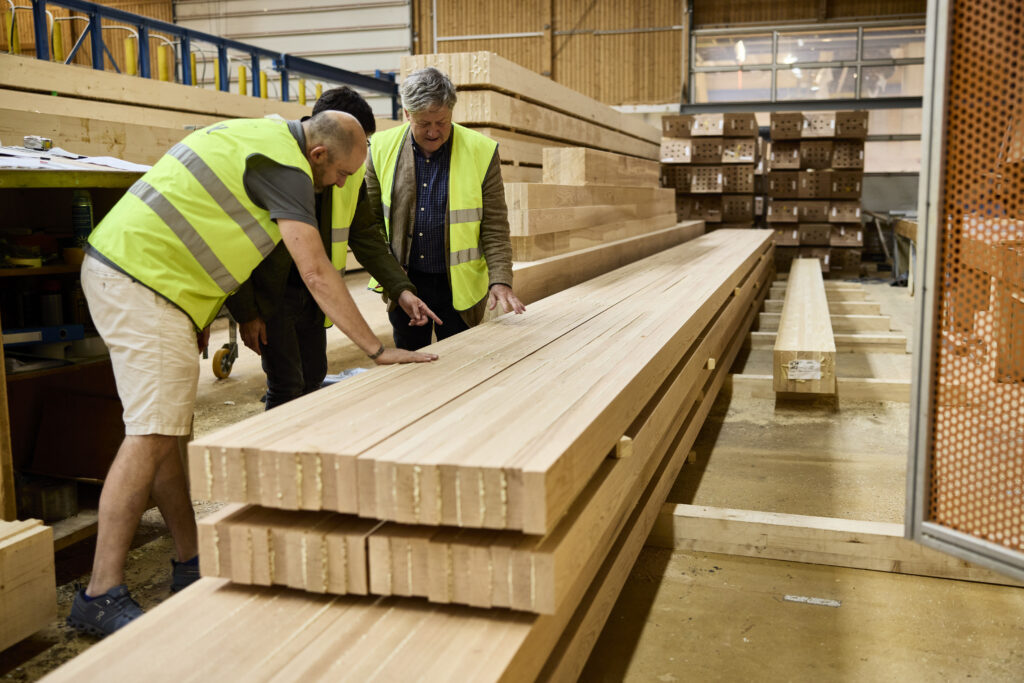
Red Oak glulam manufacturing at Neue Holzbau. – Photography by Petr Krejci
Despite Red Oak being sustainable and constituting a sizable 18 percent of North American hardwood forests, it is underutilized in Europe. Increased use of Red Oak would reduce the stress on more widely used species and provide designers and customers with an enriched palette of timber materials to choose from.
Because Red Oak is denser and more stable than the standard construction timbers, less material is required, minimizing the visual prominence and footprint of the structure while maintaining high structural performance. The use of Red Oak also allows for more precise and long-lasting joints that enable the structure to be disassembled, moved, repaired and/or reassembled many more times than standard construction materials, supporting the longevity of the piece.
AHEC believes that timber and design industries have important contributions to make in the battle against rising temperatures and diminishing biodiversity in global cities. Vert’s use of Red Oak demonstrates a valuable material option that gives architects a sustainable solution with great structural properties.
